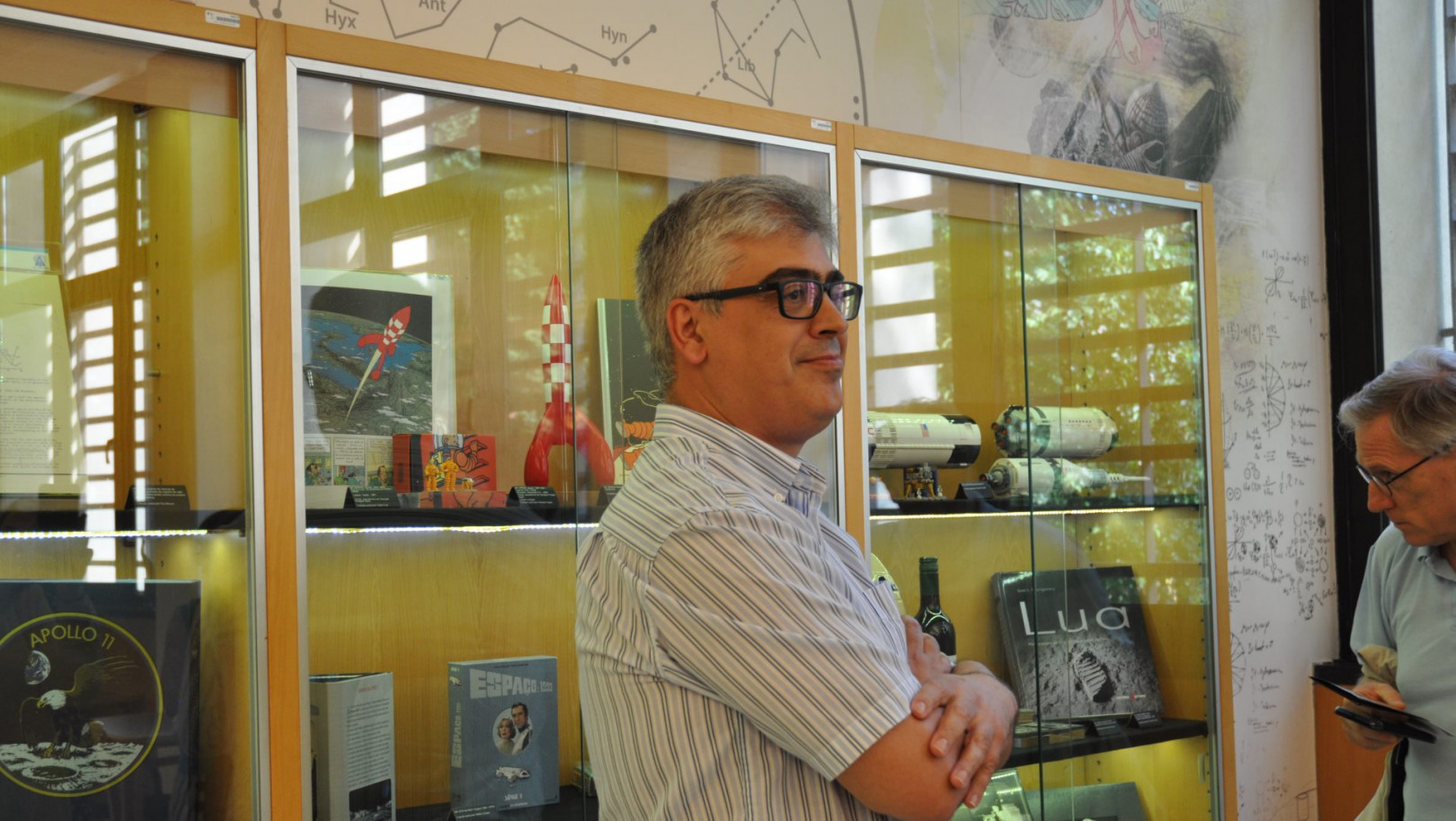Exhibition at FCUP celebrates the 50 years since the arrival of man on the moon
On 20 July of 1969, the American astronaut Neil Armstrong walked on the moon for the first time. The University of Porto (U.Porto), along with INESC TEC, intended to mark the anniversary of the first moon landing with a number of activities, including an exhibition entitled “50 anos da Chegada do Homem à Lua” (in English “50 years since the arrival of man on the moon”).
24th July 2019
Orlando Frazão, researcher of INESC TEC's Centre for Applied Photonics (CAP) and Professor at the Faculty of Sciences of U.Porto (FCUP) was one of the people responsible for the organisation of the exhibition that intends to put visitors through a journey in time, so that they could remember the 60's and the scientific explorations of that time.
“Everything started with a dream when Kepker published his SOMNIUM book in 1634, in which man goes to the Moon in a dream. The dream became a reality in 20 July of 2019 with the landing of Apollo XI on the moon. After 50 years, it’s possible to make an exhibition in Porto, showing that dream materialised and continue dreaming about going to Mars”, explains the researcher.
The exhibition, which is being held at FCUP’s Library, is divided in several parts, from science fiction and scientific disclosure literature to comics and also technical reports related to this theme. There are two collections that are part of the personal collection of Orlando Frazão and Rui Moura, the latter being a Professor at FCUP, a researcher at the Institute of Earth Sciences and one of the organisers of this initiative. The exhibition also includes another division composed of several materials, including stamps, coins, medals, notebooks and other objects related to the man’s journey to the moon.
With free entrance, the exhibition was inaugurated on 22 July and it’ll be open to the public until the end of November 2020. It can be visited from Monday to Friday between 9:00 a.m. and 7:30 p.m.
The researcher mentioned in this news piece is associated with INESC TEC.


